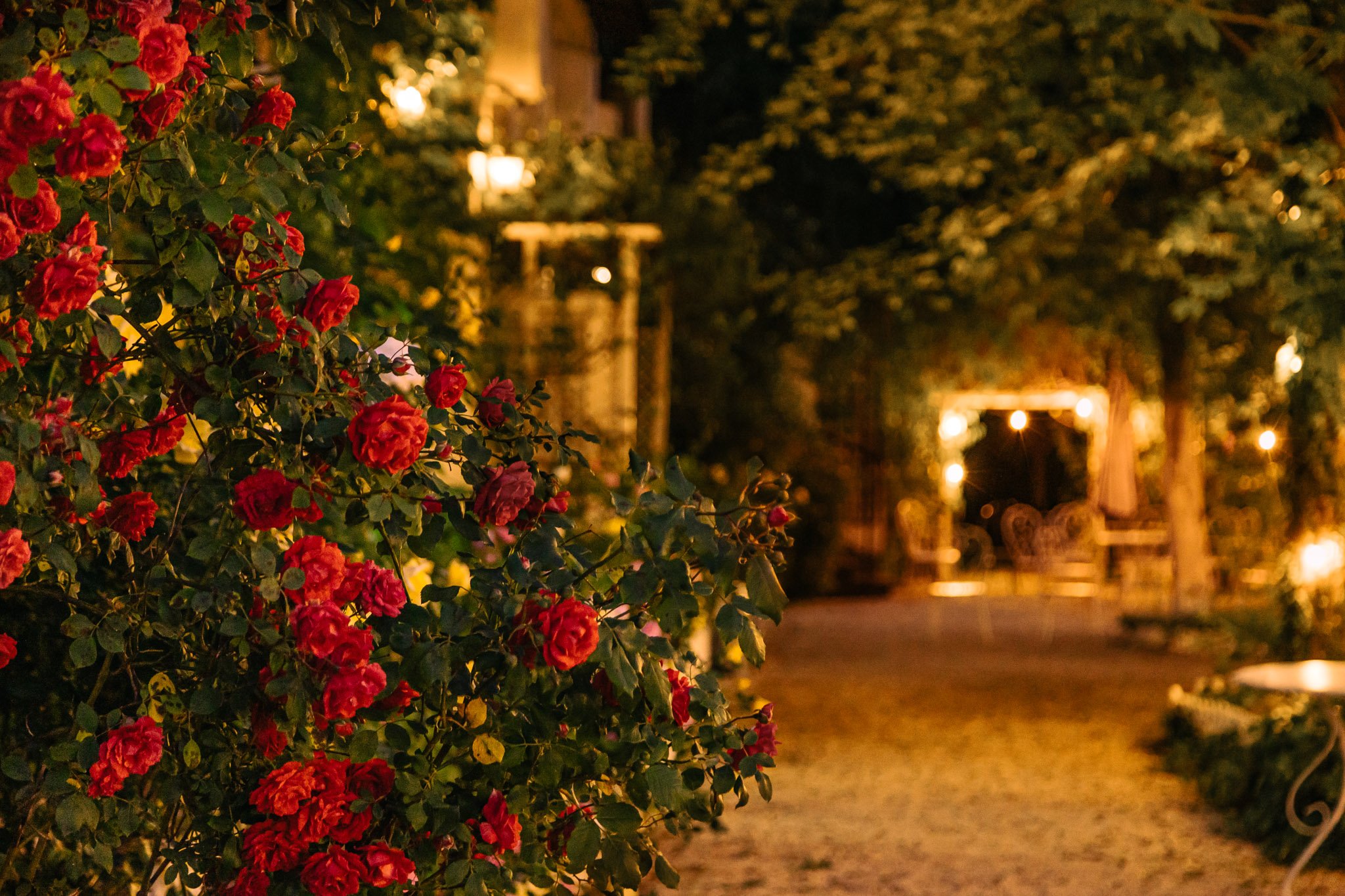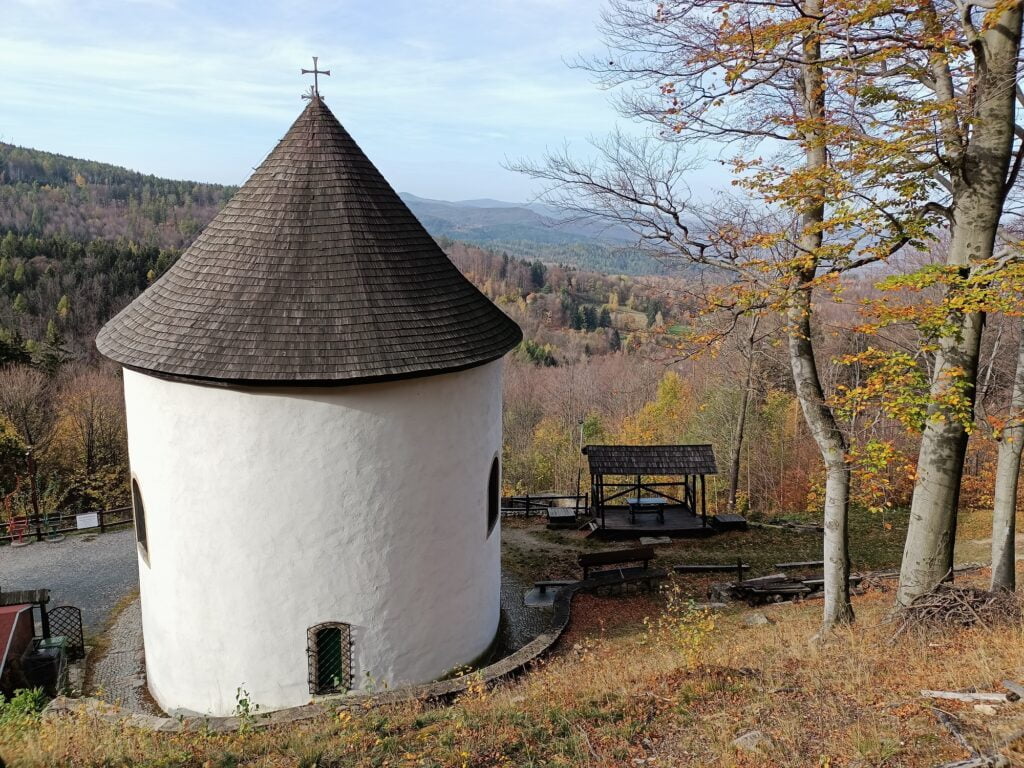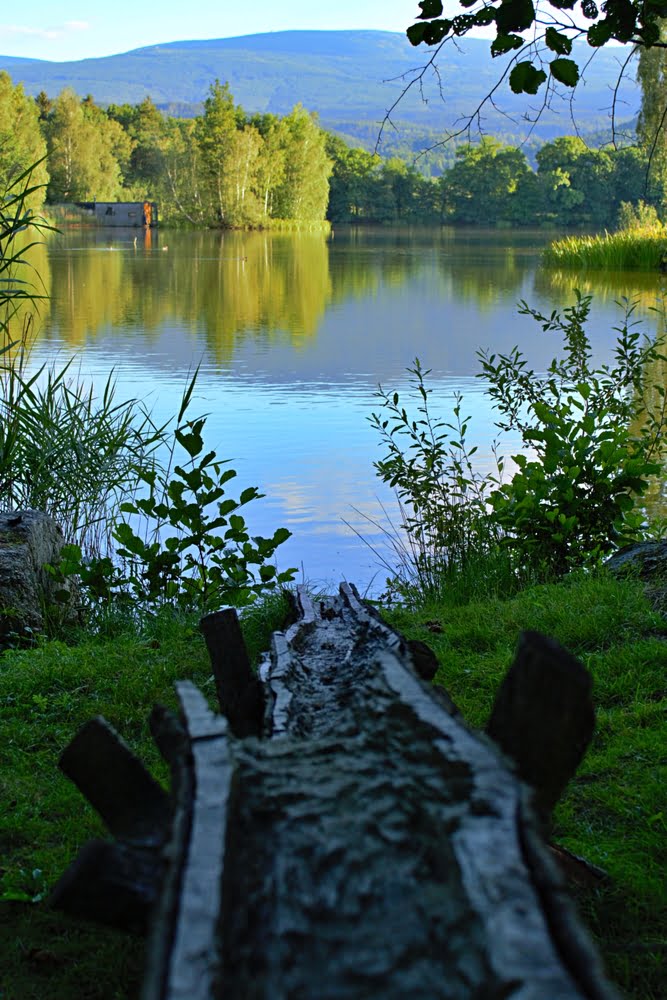Podgórzyn is a charming town located on the bank of a stream at the foot of the Karkonosze Mountains. The highest elevations in this area are Smogornia (1,489 m above sea level), Mały Szyszak (1,435 m above sea level) and Tępy Szczyt (1,387 m above sea level), therefore the vegetation found here is typically alpine. The village was owned by the Schaffgotsch family from Cieplice, who, among others, expanded the town's main attraction – the Podgórzyńskie Ponds complex.
History of Podgórzyn
The settlement was founded in the 14th century, but the name Podgórzyn was adopted only in 1946. In the Middle Ages, the Cistercians from Cieplice created breeding ponds here. Ultimately, there were nearly 70 of them and they constituted the largest complex of this type in the Sudetes. About 20 of them have survived to this day and each of them is now privately owned. IN Podgórzyńskie Ponds you can catch carp, grass carp, silver carp, crucian carp and trout. Fishing is made more pleasant by admiring the numerous rare birds found here - gray heron, lapwing, great crested grebe, sparrowhawk, buzzard, osprey, red kite, hawk and even a peregrine falcon.
Wedding, corporate event or with friends?

In the 17th century, bells and cannon barrels were produced in Podgórzyn. In 1820 it was built here Church of St. Trinity, in which the baptismal font and the bell cast in the local factory have been preserved to this day. In Podgórzyn there were also: a sawmill, a paper mill, a brewery, a glassworks and a grinding plant for precious stones and crystals.
In 1911, a tram line was built on the causeway between the ponds: Cieplice - Podgórzyn. A reminder of this connection is now available to tourists historic tram. The former tram line allowed tourists to reach the foothills of the mountains, from where they were only a short walk away from attractions such as Chojnik Castle, or Prince Henry's Castle. It operated until 1964, when it was replaced by bus line No. 4.
What is worth seeing when visiting Podgórzyn?
The Podgórzyn area can be visited both on foot and on bicycle trips. A particularly recommended route for walkers runs through Podgórzyn Górny (Podgórzyn pod Skałą), Dolina Czerwienia, Holiday House "Maria", Holiday House "Zielona Gospoda", Markus, Przełęcz Zachełmska, Wiśniowy Sad and Skalna Brama. Cyclists will certainly appreciate the charms of the route: Podgórzyn Górny - Przesieka - Droga pod Reglami - Żelazny Most pod Zamkiem Chojnik - Zachełmie - Podzamcze - Cieplice Zdrój - Staniszów - Głębock - Czerwony Dworek - Mysłakowice - Ścięgny - Karpacz - Sosnówka Górna – Sosnówka Dolna.
Mountain trails lead from Podgórzyn Dolny to the Czarna Przełęcz in the Karkonosze Mountains and to the Chojnik Castle. In turn, from Podgórzyn Górne you can follow the mountain trail to the Karkonosze Pass through Przesieka. On the way, it is worth stopping at the 10-meter long one Podgórna Waterfall, which is located 547 m above sea level around a 15-meter cliff. Moreover, on the slope of Grabowiec (784 m above sea level), in the forest above Sosnówka Górna, there is St. George's Chapel Anna, which was built in 1718. From the mountainside gushes worshiped by the pagans - Good Source.

In 1771, in Podgórzyn, the Senior Square was built Mouflon Monument. It is intended to commemorate the fact that this species of animals lived in the area of today's Podgórzyn. The image of the mouflon is also on the coat of arms of the Podgórzyn commune.
Right next to the monument there is an almost completely forgotten natural attraction - Rock Rift. It is a 30-meter-long isthmus between two several-meter-high rocks, which you can easily walk through, and at the end use a ladder to reach the very top. In the past, there was a viewing point there, as evidenced by the remains of railings.
What else awaits tourists in Podgórzyn?
When visiting Podgórzyn, it is worth visiting the local place for a while Living Open-Air Bakery Museum. Here you can taste bread made according to a centuries-old, closely guarded procedure, based only on natural, local ingredients. Old wooden ovens are used to bake bread traditionally, hence the unique taste and aroma of the local bread. The open-air museum is open only two days a week - on Wednesday and Sunday. There is also one in Podgórzyn stork's nest, which, thanks to its cameras, allows you to monitor birds traveling around all corners of the globe.
They are organized here every year in Podgórzyn bicycle races of various ranks, including Podgórzyn Commune Mayor's Cup, Sudety Time Trial, "Bałtyk-Karkonosze Tour" race. Another interesting event is the Polish Mountain Championships for Tandems, Uniformed Services and Amateur Road Cycling.
